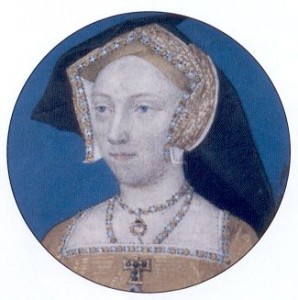 On this day in history, on the night of 24th October 1537, Queen Jane Seymour, third wife of King Henry VIII, died at Hampton Court Palace.
On this day in history, on the night of 24th October 1537, Queen Jane Seymour, third wife of King Henry VIII, died at Hampton Court Palace.
Jane had given birth to a healthy baby boy, the future King Edward VI, on 12th October 1537, but had become ill not long after Edward’s christening on 15th October. It is believed that she died of puerperal (childbed) fever, a postpartum infection.
Jane Seymour was laid to rest in St George’s Chapel, Windsor Castle, on 13th November, with her step-daughter, the Lady Mary, acting as chief mourner. Her heart and entrails were buried in the Chapel Royal at Hampton Court Palace:
“First the wax-chandler did his office, taking out the entrails “with searing, balming, spicing, and trammeling in cloth,” then the plumber leaded, soldered, and chested; and her entrails were honourably interred in the chapel. Friday, 26 Oct., there was provided in the chamber of presence a hearse with 21 tapers about it, &c., and the corpse conveyed, in honourable wise, from the place where she died, and laid beneath the hearse. All the ladies and gentlewomen “put off their rich apparel, doing on their mourning habit and white kerchers hanging over their heads and shoulders,” and there knelt about the hearse during mass afore noon and Dirige after; there was also a watch kept nightly until the last day of the month.”1
You can click here to read my article from 2014 which contains primary source accounts of Jane’s illness and death.
Contrary to myth, Jane Seymour did not die after having had a C-section – click here to read more on that.
My 60-second history video on Jane Seymour:
Further reading on Jane Seymour:
- Jane Seymour – Guest Post by Lauren Johnson
- Jane Seymour: The Meek and Mild One?
- Jane Seymour: Redefining the Myth
Notes and Sources
- Letters and Papers, Foreign and Domestic, Henry VIII, Volume 12, Part 2, 1060.